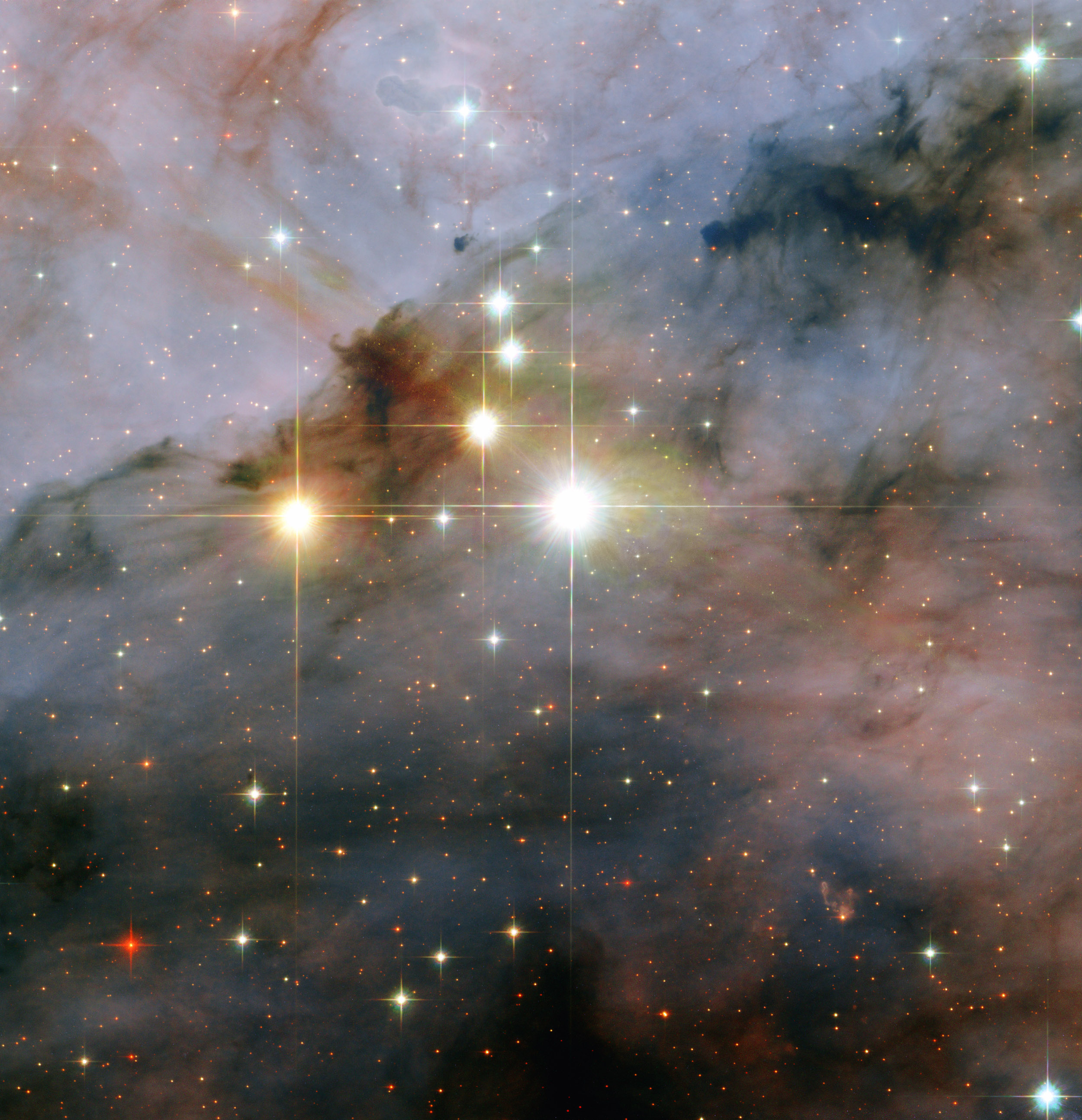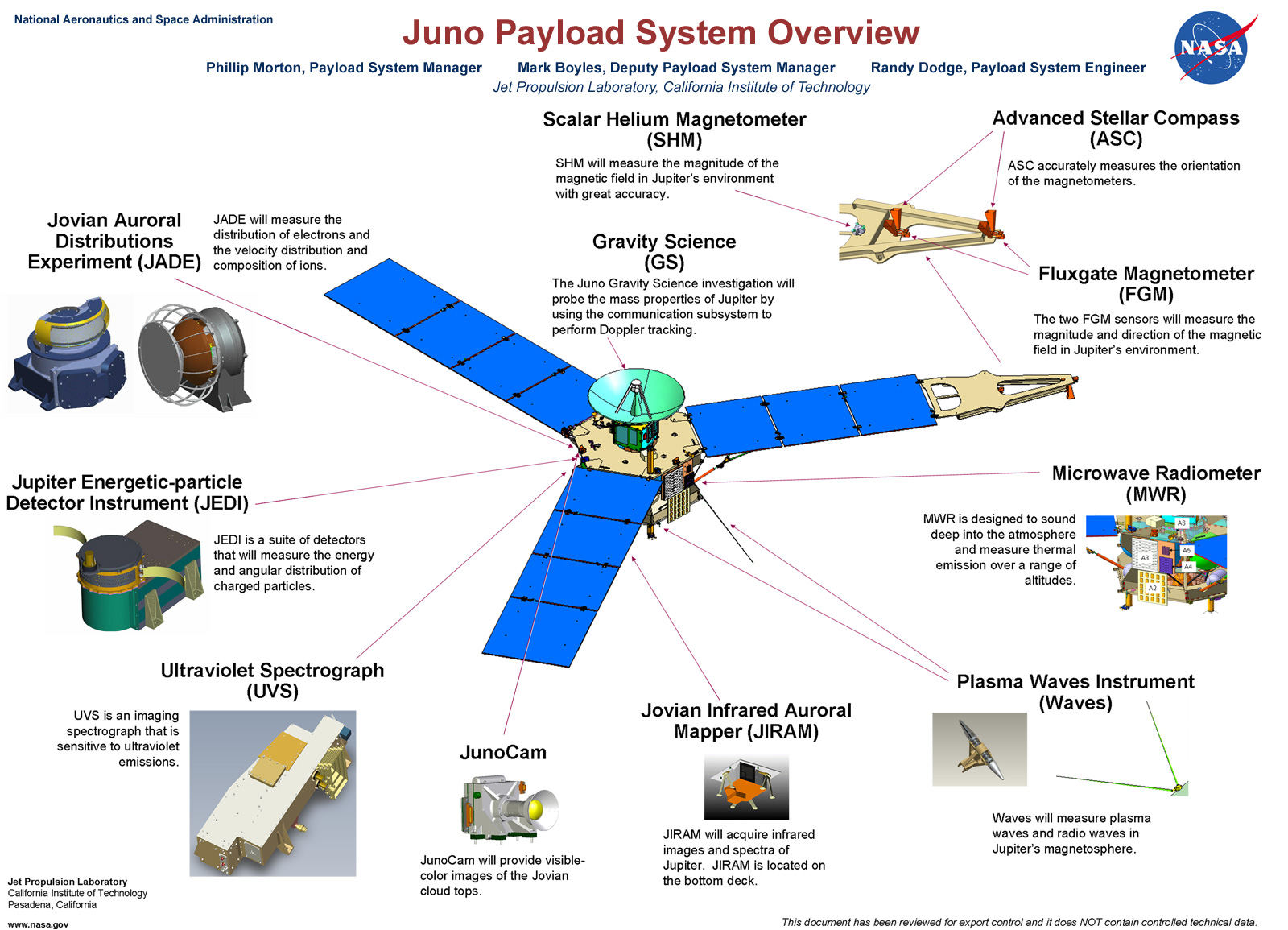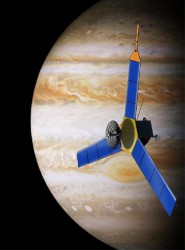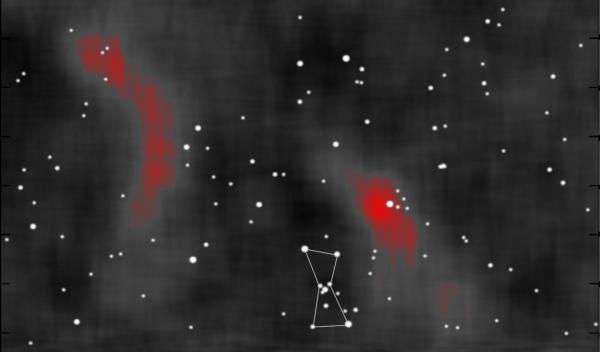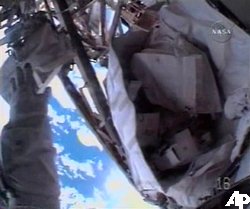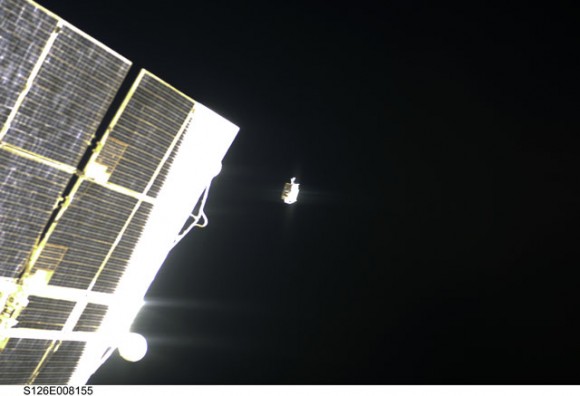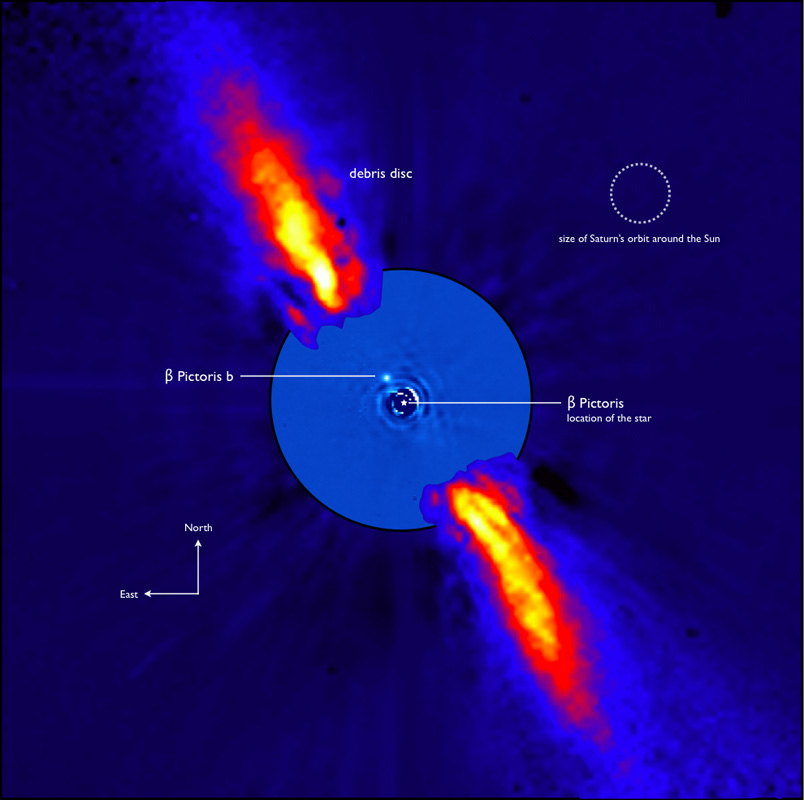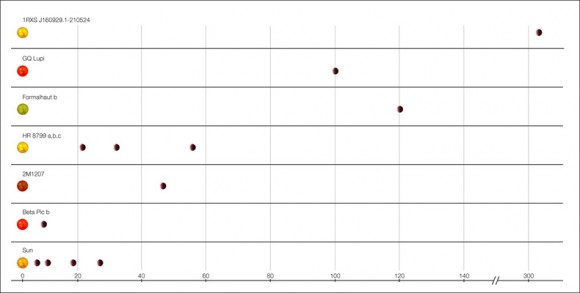[/caption]
The Carina Nebula contains the famous blue star Eta Carinae, which has the highest luminosity of any star we know. And in the same nebula live two other life-in-the-fastlane stars, and the Hubble Space Telescope has provided this gorgeous, gorgeous image of them. Until recently these colossal stars — two of our galaxy’s most massive luminaries — have been shrouded in mystery, (avoiding the paparazzi, no doubt). But Hubble’s Wide Field Camera has done what only HST’s investigative reporting could unveil, revealing these stars greater detail than ever before. These stars are so bright and powerful that they burn through their hydrogen fuel source faster than other types of stars, leading to a ‘live fast, die young’ stellar lifestyle. And (gasp!) one of the stars has been hiding a secret companion, and (double gasp!) the other star is part of a three-some! Is that why this nebula is giving these stars “the finger?”
The two stars WR 25 and Tr16-244, located within the open cluster Trumpler 16, is embedded within an immense cauldron of gas and dust that lies approximately 7,500 light-years from Earth. They produce incredible amounts of heat, emitting most of their radiation in the ultraviolet and appearing blue in color.
WR 25 is the brightest, situated near the centre of the image. The neighboring Tr16-244 is the third brightest, just to the upper left of WR 25. The second brightest, to the left of WR 25, is a low-mass star located much closer to Earth than the Carina Nebula.
WR 25 is likely to be the most massive and interesting of the two. Its true nature was revealed two years ago when an international group of astronomers led by Roberto Gamen, then at the Universidad de La Serena in Chile, discovered that it is composed of at least two stars.
It’s not usual for massive stars to form in compact clusters, and often, the individual stars are physically so close to each other that it is very difficult to resolve them in telescopes as separate objects. And now, these Hubble observations have revealed that the Tr16-244 system is actually a triple star. (see image below).
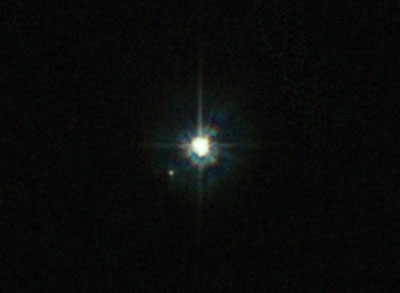
WR 25 and Tr16-244 are the likely sources of radiation that is causing a giant gas globule within the Carina Nebula to slowly evaporate away into space, while possibly inducing the formation of new stars within it (see separate image). The radiation is also thought to be responsible for the globule’s interesting shape, prominently featured in earlier Hubble images, which looks like a hand with a ‘defiant’ finger pointing towards WR 25 and Tr16-244.
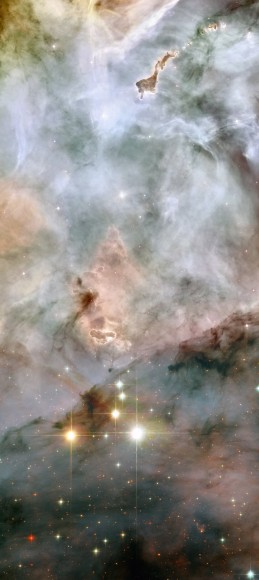
And if you can’t see it, here’s more detail of “the finger.”

Source: ESA

